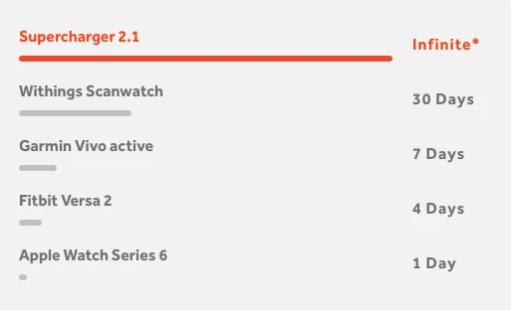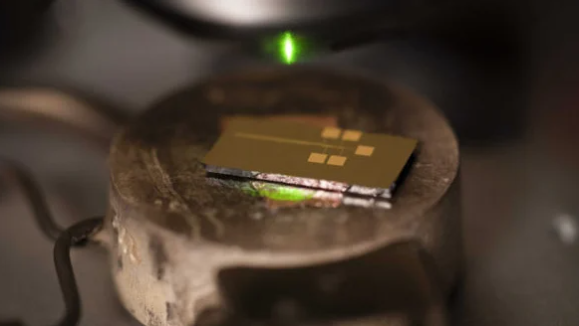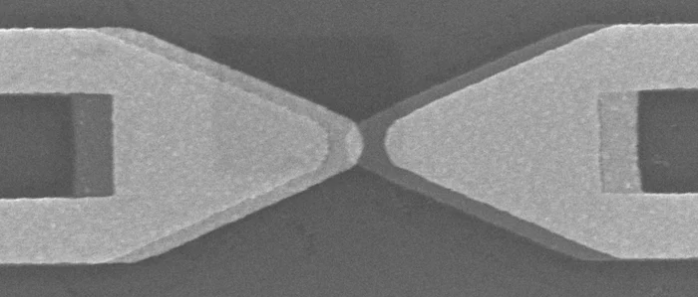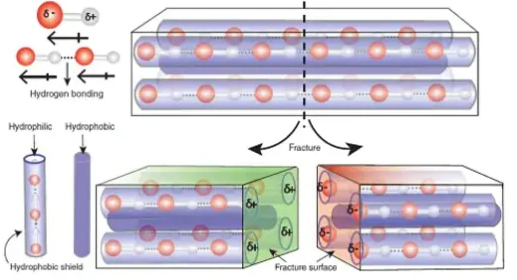Some wearable device manufacturers don’t consider energy harvesting (in any form) to be a meaningful design choice. In the pursuit of self-powered wearables, electronics developers are looking to change that today.
Earlier this year, Swiss smartwatch maker SEQUENT released a completely self-powered smartwatch that uses “patented autonomous micro-mechanical movement technology,” and SEQUENT is not the only one seeking to ditch charger-dependent wearables.

SEQUENT compares the lifespan of its smartwatches to other common wearables on the market. Image courtesy of SEQUENT
In recent years, engineers have become creative in how they power wearable devices, innovating new approaches for sustainable and self-powered devices. However, one of the primary issues that comes with energy harvesting is a low energy return on investment (EROI). The concept of EROI (introduced by systems ecologist Charles AS Hall in the 1980s) is a familiar concept to EEs: energy is only useful if you get more out than you put in.
In the context of wearables, EROI specifically refers to the ratio of energy harvested to the energy put into the harvester. It’s no surprise that researchers are pursuing high-EROI harvesters for self-charging wearables—and many are already turning to human and ambient energy sources.
Energy harvesters - and the EROI discussion
There are a plethora of energy harvesting methods on the market: solar, RF, thermal, mechanical, and chemical, to name a few. Each of these methods has pros and cons, especially when it comes to energy return on investment. Here is a brief overview of each harvesting technology, as well as the research that may support future EROI advancements.
Solar Collectors
One of the most attractive options for EROI wearables is solar energy harvesters. When light above a certain energy threshold strikes the surface of a selected material, electrons previously bound to the material are released. This process, called the photovoltaic effect, is the basis for solar power generation.
Photovoltaics can be used to power wearable devices because they don't draw much current and operate at fairly low voltage levels. The main drawback of solar power is that it can't operate indoors, at night, or on cloudy days - a problem that is usually solved by pairing the technology with batteries or supercapacitors.
Recently, scientists from the Australian National University discovered that ultra-thin two-dimensional materials can convert sunlight into electricity by "twisting" the angle between the two layers of the material.

The material is said to be hundreds of times thinner than a human hair. Image courtesy of Australian National University and PV Magazine
With further research, the scientists believe the material, when coated on surfaces, could allow devices to power themselves - from mobile phone screens to windshields.
RF Energy Harvester
RF energy harvesters use specially tuned antennas to convert signals within the radio and microwave frequency bands into electrical energy.
Every type of data transmission to and from our phones, computers, and other electronic devices uses some kind of signal that falls within the radio spectrum. However, the energy that can be harvested from random sources is extremely low due to the proximity and range of the source. In order to properly power a device, the transmitter needs to be targeted, close, or a very large radio.
Researchers at ETH Zurich believe that the harvested RF energy is not enough to power individual components in a wearable device, as shown in the figure below.

Typical current requirements for specific components in a wearable device. Image courtesy of ETH Zurich and Research Gate
However, not all researchers agree. For example, Israeli startup Wiliot recently made headlines for raising $200 million to create RF energy harvesting sensors. Wiliot’s sensor contains a low-power Bluetooth Arm MCU that is said to draw energy from surrounding RF signals. The 1 MHz Cortex-M0+ chip has temperature, proximity, and humidity sensors, as well as 1 Mbits of NVM and a self-power management unit.
Thermal energy collector
Thermoelectric devices convert heat—or more accurately, temperature differences—directly into electricity via semiconductor transducers. Wearable designers often exploit the thermoelectric effect to power small wearable devices because the human body effectively acts as a continuous heat source.
But some scientists are looking to excess heat from machines like ovens and factory chimneys to harvest thermal energy. Researchers at the University of Colorado Boulder recently devised a solution that uses rectennas to absorb heat from the environment. These devices work similarly to car antennas, except that instead of converting radio waves into sound, rectennas capture light and heat and convert them into energy.

Image of a "rectenna" developed at CU Boulder. Image courtesy of CU Boulder Today
While conventional antennas require electrons to travel through an insulator to harvest energy, the researchers' device uses two insulators to create what's called "resonant tunneling," a process in which electrons hit a quantum well with just the right amount of energy to travel through the two insulators.
Researchers hope the so-called breakthrough could eventually be used on a large scale - and could even capture energy radiating from Earth into outer space.
Mechanical Energy Harvester
Researchers have explored a variety of methods to convert mechanical energy into electrical energy. For wearable devices, piezoelectricity is a widely studied energy harvesting method. This method uses piezoelectric elements, which can accumulate electrical charge when a certain mechanical stress is applied to them.
These elements could be embedded in clothing such as shoes or mounted on organs such as the heart periphery, constantly self-powering through different types of muscle movements, which range from voluntary movements to idle human functions.
Recently, Indian scientists created piezoelectric molecular crystals that can generate energy under mechanical shock.

Piezoelectric molecular crystals achieve self-healing. Image courtesy of Hindustan Times
Using these crystals, the researchers have found a way to allow damaged components to generate an electrical charge at the cracked junction. As the damaged parts attract each other, the device can autonomously repair itself at the point of fracture.
"The material could potentially find applications in high-end microchips, high-precision mechanical sensors, actuators, micro-robotics, etc. Further research into such materials could eventually lead to the development of smart gadgets that can self-repair cracks or scratches," the researchers explained.
Chemical Energy Harvester
The conversion of chemical energy into electrical energy is most often associated with batteries. That's because batteries are made of materials with special chemical properties that enable them to hold and release an electrical current.
Some researchers are developing so-called biofuel cells to generate electricity from human sweat. The technology releases electricity to replace internal battery chemicals. By connecting the circuits of wearable devices directly to human skin, this chemical process could allow wearable devices to continuously draw energy from the user and power themselves independently.

Schematic diagram of a device that is self-powered by a biofuel cell. Image courtesy of Joule
Harvesting hundreds of millijoules of energy during sleep, the Band-Aid-like device proved more effective than other skin harvesters. The researchers also integrated a piezoelectric generator underneath the biofuel cell to harvest additional mechanical energy when the user presses a finger on it. The study suggests that this energy-harvesting wearable could potentially help power electrochromic displays and sensors, offering a "very high return on energy investment."
Engineering Challenges of Self-Powered Wearable Devices
In just a few years, wearable devices, from smartwatches and smart glasses to fitness trackers and medical monitors, have become an integral part of many people’s lives.
With continued research into embedded energy harvesting, it is possible that these devices could one day be completely self-powered. While many embedded designers have historically focused on low-power processors, sensors, and displays, high-EROI energy harvesters could be the final piece of the puzzle.
To maximize EROI, engineers will likely continue to combine these energy-harvesting methods; using multiple sources in a single activity may be key to developing sustainable and self-powered systems.
Previous article:Realme Flash real phone revealed: Magnetic wireless charging with full power throughout the whole process
Next article:IT6400 - Easily test Bluetooth headset RF performance using nA-level battery simulator
- Popular Resources
- Popular amplifiers
- Apple faces class action lawsuit from 40 million UK iCloud users, faces $27.6 billion in claims
- Apple and Samsung reportedly failed to develop ultra-thin high-density batteries, iPhone 17 Air and Galaxy S25 Slim phones became thicker
- Micron will appear at the 2024 CIIE, continue to deepen its presence in the Chinese market and lead sustainable development
- Qorvo: Innovative technologies lead the next generation of mobile industry
- BOE exclusively supplies Nubia and Red Magic flagship new products with a new generation of under-screen display technology, leading the industry into the era of true full-screen
- OPPO and Hong Kong Polytechnic University renew cooperation to upgrade innovation research center and expand new boundaries of AI imaging
- Gurman: Vision Pro will upgrade the chip, Apple is also considering launching glasses connected to the iPhone
- OnePlus 13 officially released: the first flagship of the new decade is "Super Pro in every aspect"
- Goodix Technology helps iQOO 13 create a new flagship experience for e-sports performance
- LED chemical incompatibility test to see which chemicals LEDs can be used with
- Application of ARM9 hardware coprocessor on WinCE embedded motherboard
- What are the key points for selecting rotor flowmeter?
- LM317 high power charger circuit
- A brief analysis of Embest's application and development of embedded medical devices
- Single-phase RC protection circuit
- stm32 PVD programmable voltage monitor
- Introduction and measurement of edge trigger and level trigger of 51 single chip microcomputer
- Improved design of Linux system software shell protection technology
- What to do if the ABB robot protection device stops
- Analysis of the application of several common contact parts in high-voltage connectors of new energy vehicles
- Wiring harness durability test and contact voltage drop test method
- From probes to power supplies, Tektronix is leading the way in comprehensive innovation in power electronics testing
- From probes to power supplies, Tektronix is leading the way in comprehensive innovation in power electronics testing
- Sn-doped CuO nanostructure-based ethanol gas sensor for real-time drunk driving detection in vehicles
- Design considerations for automotive battery wiring harness
- Do you know all the various motors commonly used in automotive electronics?
- What are the functions of the Internet of Vehicles? What are the uses and benefits of the Internet of Vehicles?
- Power Inverter - A critical safety system for electric vehicles
- Analysis of the information security mechanism of AUTOSAR, the automotive embedded software framework
- [Atria Development Board AT32F421 Review] 4. Run RTX
- [MM32 eMiniBoard Review] Initial Impressions of Receiving Data Download Environment Setup
- A brief discussion on several application solutions of GPRS
- 【Embedded Qt】Building the Qt runtime environment for embedded Linux
- Project Submission
- About crossover
- The download and win gift event is here again~you can learn and win prizes at the same time!
- The smartwatch craze has left the survivors
- [TI recommended course] #Boost and buck-boost DCDC converters help wireless charging design#
- Milliohm meter based on [EVAL-ADICUP360] - Programming

 LT1211IS8#TRPBF
LT1211IS8#TRPBF
















 京公网安备 11010802033920号
京公网安备 11010802033920号